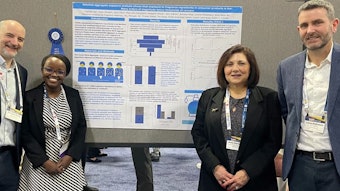The 7th amendment of the European Cosmetics Directive (2003/15/EC) was published earlier this year. Among other things it will, when enacted into national legislation, require manufacturers of cosmetics to indicate in their ingredient statements, the names of 24 chemically defined substances (T-1) and two natural extracts when they are present at concentrations exceeding 0.001 percent in cosmetics that are intended to remain on the skin, or 0.01 percent in those that are rinsed off the skin. As opposed to other labelling rules that relate only to intentionally added ingredients, the requirement to label these 26 purportedly allergenic materials will depend on their concentrations in the cosmetic products regardless of whether they have entered the product by direct addition or as constituents of essential oils, natural extracts or even as impurities in synthetic ingredients. Rules such as these can only be adhered to and policed if there exist reliable validated analytical methods for quantifying the presence of these substances.
For this reason, the International Fragrance Association (IFRA) has set up a working group on analytical methods in order to develop analytical techniques that not only meet these requirements but are also accessible to the technical resources of most manufacturers in the industry. Efforts were made through this association and the European Flavour and Fragrance Association (EFFA) to ensure that the result of this collective effort could also be of benefit to others. In particular, a close collaboration with the European Centre for Standardization (CEN) has been made by one of the present authors (A. Chaintreau) on behalf of EFFA. It is hoped also that through these efforts, other analytical chemists such as those working for consumer protection groups, will be made aware of some of the potential errors that can be made when less reliable methods are used.
This paper aims to describe the analytical strategy that has been developed at Firmenich to monitor suspected allergens in fragrance concentrates. First the routine IFRA method will be briefly described, as it is intended to be the “common language” among fragrance companies, suppliers and customers. However, due to the extreme complexity of fragrance mixtures, some cases may require more sophisticated tools to solve ambiguities. Two different non-routine approaches are presented: the former calls for more sophistication from the MS side (GC/MS with chemical ionization). The latter requires more sophistication on the chromatographic side, owing to comprehensive GC.










